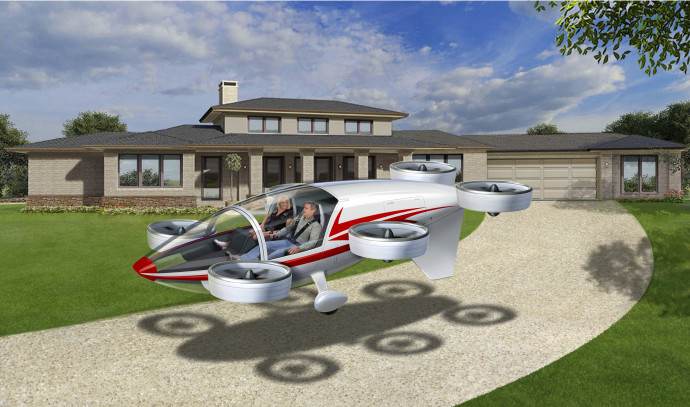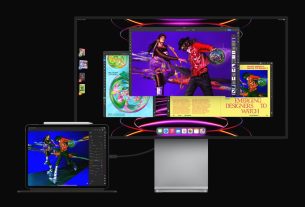Flying cars may no longer be a far-off futuristic dream, thanks to a new wingless flying vehicle created by Applied eVTOL Concepts using proven NASA tech.
Applied eVTOL Concepts, a company that specializes in vertical take-off and landing (VTOL) vehicles, recently presented plans for the Epiphany Transporter, a wingless, flying vehicle that they imagine could carry passengers directly to their destinations at high speed.
“In lieu of long, burdensome wings, the compact advanced vehicle configuration vaunts morphing, dual-mode, ducted thrusters enabling it to hover like a helicopter and attain efficient high-speed cruise flight like an airplane,” the company explained, adding that the vehicle would only be roughly the size of a Tesla Model S.
The Epiphany Transporter would provide many of the same benefits of an aircraft without many of the detriments. While it is remarkably swift, with cruise speeds as high as 160 miles per hour, it isn’t as loud as traditional aircraft.
A quiet aircraft
The CDC noted that, based on a study that examined noise on Airbus A321 aircraft, the outside of an aircraft engine can reach roughly 140 decibels (dB) at takeoff. This is a disruptive amount of noise that can even lead to hearing loss.
In fact, a separate CDC article on noises that cause hearing loss noted that prolonged exposure to noises above only 70 decibels is sufficient to result in hearing loss.
The Epiphany Transporter, however, at a distance of only 50 feet, generates around 55 dB of noise.
In context, according to the CDC, whispering is normally around 30 dB, a typical conversation is around 60 dB, and a motorcycle engine is roughly 95 dB.
What would the Epiphany Transporter look like?
The Epiphany Transporter has the capacity to carry two passengers in addition to luggage and personal items while still being able to, with its thrusters folded up, fit inside a standard one-car garage.
Additionally, the concept has been demonstrated to be able to operate effectively. The vehicle uses NASA-proven duct thrusters, developed originally with a DARPA grant of 5.1 million USD and subsequently tested over a period of approximately 25 years.
These thrusters have proved their efficacy in flight testing wind tunnels and multiple prototype manned aircraft.
“We have every reason to believe in the ability of our proprietary, field-proven ducted thrusters, and leading-edge vehicle design, to perform in flight as expected.” Founder, CEO, and Lead Designer of Applied eVTOL Concepts, Michael Moshier stated.
The Applied eVTOL Concepts team, according to the release, is currently focused on personal aircraft for Urban Air Mobility (UAM). The company uses computer models to evaluate the vehicles’ thrusters’ performance. The thrusters are continually improving in efficiency and the model reflecting their performance has proven accurate.
The project’s Chief Engineer and Senior Aerodynamicist, Rob Bulaga, noted that their model “consistently and accurately predicts our thruster performance within 2% of real-world testing.”



